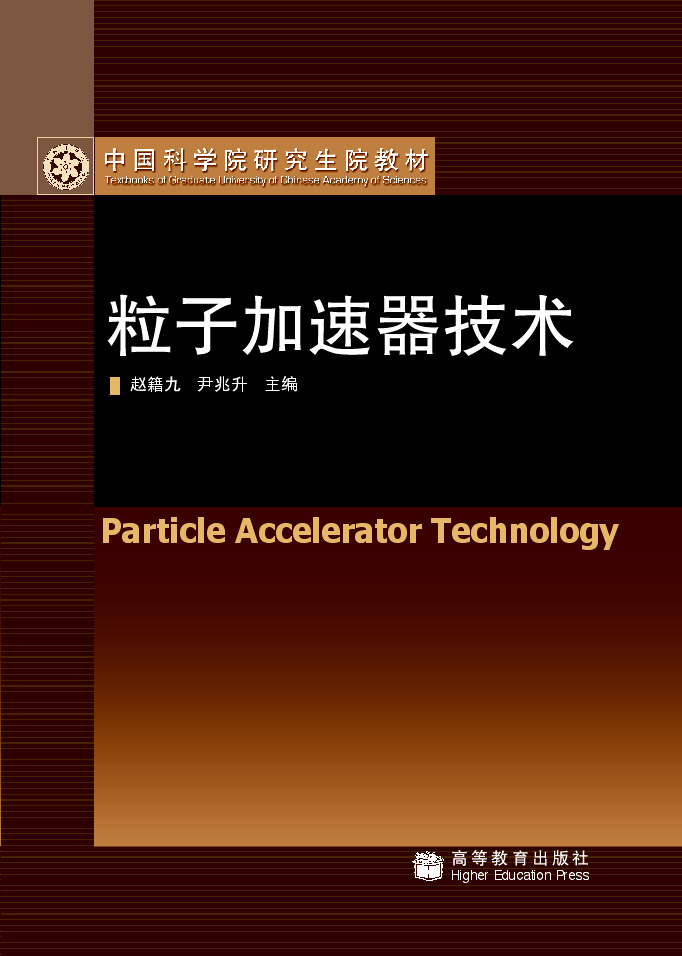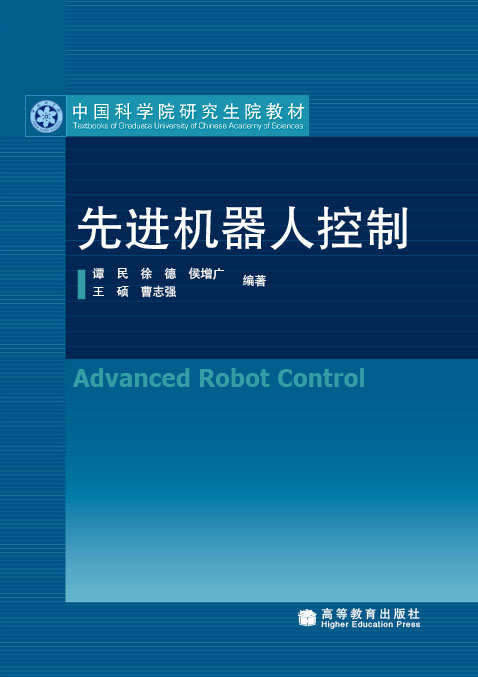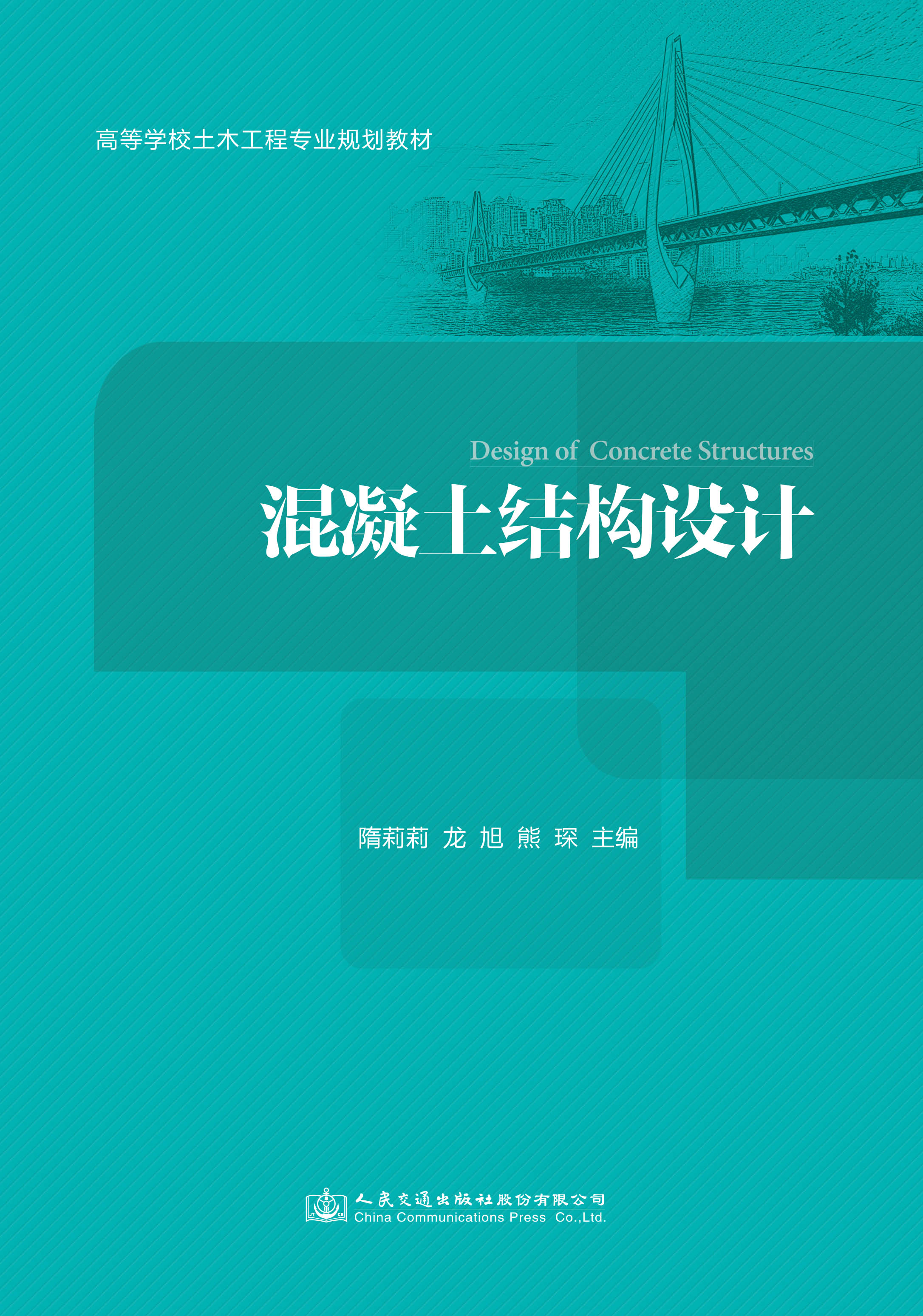- 高等教育出版社
- 9787040201420
- 1版
- 120529
- 48261953-3
- 平装
- 16开
- 2006-11
- 660
- 544
- 理学
- 物理学类
- TL5
- 物理类
- 研究生及以上
本书是中国科学院高能物理研究所的研究人员在中国科学院研究生院多年授课的讲义基础上整理而成的。全书以高能加速器为对象,讨论加速器各个系统的主要技术问题,包括:高能加速器的磁铁技术、磁铁电源技术、高频技术、真空技术、束流测量技术、自动控制技术、电子直线加速器技术和加速器辐射防护技术等。
本书反映了当今国际高能加速器科学技术研究的前沿水平,可作为高等院校物理系相关专业的研究生教材或教学参考书,也可供相关专业的研究人员和技术人员参考。
主要符号表
第一章 高能加速器导论
1.1 高能加速器在基本粒子研究中的意义
1.2 加速器的能量提高与技术创新
1.3 高能加速器的发展前沿
1.3.1 高能量前沿
1.3.2 高亮度前沿
1.4 基于加速器的多学科平台
1.4.1 同步辐射装置
1.4.2 自由电子激光
1.4.3 散裂中子源
1.5 加速器技术——高能加速器建造和发展的保证
参考文献
第二章 加速器磁铁技术
2.1 加速器磁铁的主要类型
2.2 加速器磁铁磁场的基本形态和磁场分析
2.2.1 磁场的基本特性
2.2.2 磁场的基本形态和磁场分析
2.3 加速器常规磁铁的设计和建造
2.3.1 铁心磁铁设计的给定要求和设计的一般考虑
2.3.2 常规磁铁的极面设计
2.3.3 磁极极体和铁心回路
2.3.4 磁铁的端部效应
2.3.5 铁心磁铁的端部垫补与端部削斜
2.3.6 铁心材料特性和磁铁运行特性
2.3.7 铁心磁铁的扰动效应
2.3.8 磁铁磁场分布的数值计算
2.4 永磁磁铁
2.4.1 永磁磁铁的特殊性质
2.4.2 永磁材料
2.4.3 永磁多极磁铁的工作原理
2.4.4 永磁磁铁的扰动效应与磁场微调技术
2.4.5 永磁磁铁的组装技术
2.5 超导磁铁
2.5.1 超导材料
2.5.2 超导多极磁铁多极磁场的产生
2.5.3 铁轭的影响
2.5.4 线圈端部的磁场
2.5.5 超导磁铁的机械精度和磁场力
2.6 加速器磁铁的磁场测量
2.6.1 霍尔片磁场测量
2.6.2 移动长线圈磁场测量
2.6.3 旋转线圈磁场测量
参考文献
第三章 加速器磁铁电源技术
3.1 电源技术的发展及磁铁电源在加速器中的作用
3.1.1 电源技术及功率器件简介
3.1.2 加速器电源的基本概况
3.2 几种磁铁电源的基本工作原理
3.2.1 晶闸管调相直流电源
3.2.2 开关型直流电源
3.3 BEPCII储存环磁铁稳流电源简介
3.3.1 BEPCII对储存环磁铁稳流电源的基本要求
3.3.2 BEPCII典型稳流电源介绍
【本章附录1】 稳定电源术语定义
【本章附录2】 零磁通电流传感器工作原理(简称:DCCT)
参考文献
第四章 加速器高频技术
4.1 高频系统在加速器中的作用
4.1.1 用直流电压产生的电场加速带电粒子
4.1.2 多节累积加速
4.1.3 直线共振型加速器
4.1.4 回旋加速
4.1.5 稳相加速
4.2 高频谐振器——从LC电路到高频腔
4.2.1 RLC振荡电路
4.2.2 高频谐振腔
4.2.3 谐振腔和束流在实际电路中的等效
4.3 储存环高频系统的设计
4.3.1 设计中的储存环高频系统应达到的基本要求
4.3.2 高频加速腔设计思想
4.3.3 耦合器与陶瓷窗
4.3.4 高频功率放大器的方案选择
4.3.5 低电平控制系统
参考文献
第五章 加速器真空系统
5.1 加速器真空系统基本要求
5.2 真空物理基础
5.2.1 真空概念和测量单位
5.2.2 常用公式
5.3 真空系统的计算
5.3.1 流导计算
5.3.2 抽气方程
5.3.3 压强分布计算
5.3.4 蒙特卡罗模拟计算
5.4 真空获得方法
5.4.1 涡轮分子泵
5.4.2 溅射离子泵
5.4.3 钛升华泵
5.4.4 非蒸散型吸气剂泵
5.4.5 分布式真空泵
5.5 真空测量和检漏方法
5.5.1 真空测量方法
5.5.2 真空检漏方法
5.6 真空材料与工艺
5.6.1 真空材料
5.6.2 真空部件表面处理
5.7 储存环真空系统的设计
5.7.1 束流与残余气体相互作用寿命
5.7.2 同步辐射功率
5.7.3 同步辐射光引起的气体负载
5.7.4 真空盒的设计
5.7.5 RF屏蔽波纹管
5.7.6 结束语
参考文献
第六章 同步加速器的注入与引出技术
6.1 概述
6.2 注入方式
6.2.1 单圈单次注入
6.2.2 单圈多次注入
6.2.3 多圈注入——H-电荷转换注入
6.3 引出方式
6.4 冲击磁铁系统
6.4.1 梯形波冲击磁铁系统
6.4.2 半正弦波冲击磁铁系统
6.4.3 高压脉冲谐振充电电源.
6.4.4 冲击磁铁脉冲电源的发展趋势
6.5 切割磁铁
6.5.1 导流板型切割磁铁
6.5.2 涡流板型切割磁铁
6.5.3 Lambertson切割磁铁
参考文献
第七章 加速器束流测量技术
7.1 束流测量概述
7.2 束流测量物理
7.2.1 束流的电磁场
7.2.2 束流频谱
7.2.3 单束团
7.2.4 多束团
7.3 主要参数的测量方法和原理
7.3.1 流强测量:BCT,DCCT,WCM,法拉第筒
7.3.2 束流位置测量
7.3.3 束流截面测量
7.3.4 束流发射度测量
7.3.5 储存环束流能散度测量
7.3.6 束团长度测量
7.3.7 振荡频率测量
7.3.8 束流损失测量
7.4 逐束团束流反馈系统
7.4.1 系统的主要参数
7.4.2 系统组成
参考文献
第八章 加速器控制技术
8.1 计算机控制系统的基本概念
8.1.1 计算机控制系统的组成
8.1.2 控制系统的发展史
8.1.3 分布式控制系统的体系结构
8.1.4 自动控制系统和控制规律
8.2 计算机控制技术
8.2.1 实时操作系统
8.2.2 网络通讯技术
8.2.3 现场总线技术
8.2.4 硬件接口和前端控制设备
8.2.5 数字信号处理和反馈技术
8.2.6 以数据库为核心的信息管理系统
8.2.7 抗干扰和容错技术
8.3 控制系统的开发与集成
8.3.1 系统设计和开发
8.3.2 硬件系统的配置和选型
8.3.3 组态软件
8.3.4 软件工程
8.3.5 质量控制
8.4 加速器控制系统
8.4.1 加速器控制系统的任务
8.4.2 加速器控制系统的功能
8.4.3 加速器控制系统的体系结构
8.4.4 系统集成工具EPICS
8.4.5 加速器控制系统的组成
参考文献
第九章 电子直线加速器技术
9.1 概述
9.2 电子直线加速器原理
9.2.1 稳相原理
9.2.2 盘荷波导中的电磁场
9.2.3 主要参数及其选取标准
9.2.4 纵向运动方程
9.2.5 聚束过程的分析
9.3 RF加速结构
9.3.1 等阻抗加速管
9.3.2 等梯度加速管
9.3.3 等梯度加速结构设计的考虑
9.4 电子枪
9.4.1 常规电子枪
9.4.2 新型电子枪
9.5 正电子产生系统
9.5.1 常规正电子源概述
9.5.2 转换靶
9.5.3 横向相空间匹配
9.5.4 正电子束的纵向俘获
参考文献
第十章 加速器辐射防护与安全技术
10.1 辐射防护的理论体系
10.1.1 辐射防护的概念
10.1.2 辐射防护的法律依据
10.1.3 辐射防护标准
10.1.4 辐射防护剂量限制体系
10.1.5 辐射防护基础知识
10.1.6 辐射危险的控制
10.1.7 辐射防护中常用的量与单位
10.1.8 加速器防护安全设计
10.2 加速器辐射防护的设计
10.2.1 加速器的屏蔽
10.2.2 加速器辐射防护设计标准和辐射区域的划分
10.2.3 辐射源与辐射屏蔽
10.2.4 孔道、迷道和防护门
10.2.5 天空反散射剂量
10.2.6 感生放射性
10.2.7 气载放射性(空气活化)
10.2.8 冷却水的感生放射性
10.2.9 土壤活化
10.2.10 速调管产生的X射线
10.3 加速器辐射监测
10.3.1 加速器辐射场的特点
10.3.2 辐射剂量监测
10.3.3 表面污染监测
10.3.4 液态流出物的监测
10.4 加速器安全技术
10.4.1 窒息性气体
10.4.2 有毒有害气体(O3)
10.4.3 易燃易爆物品
10.4.4 微波
10.4.5 电器安全
10.4.6 火灾报警
10.4.7 加速器安全连锁
10.4.8 加速器安全运行
10.4.9 加速器辐射事故举例
10.5 数字化辐射防护
参考文献
索引
Contents
List of Symbols
Chapter 1 Introduction to High Energy Accelerators
1.1 Importance of High Energy Accelerators in Particle Physics Research
1.2 Beam Energy Upgrades and Technical Innovation of Accelerat ors
1.3 Development Frontiers of High Energy Accelerators
1.3.1 High Energy Frontier
1.3.2 High Luminosity Frontier
1.4 Multi-discipline Platforms Based on Accelerators
1.4.1 Synchrotron Radiation Sources
1.4.2 Free Electron Lasers
1.4.3 Spallation Neutron Sources
1.5 Accelerator Technology,Solid Base of Accelerator Construction and Development
Reference
Chapter 2 Accelerator Magnet Technology
2.1 Basic Types of Accelerator Magnets
2.2 Field Theory and Field Analysis for Accelerator Magnets
2.2.1 Basic Laws of Magnetic Field
2.2.2 Field Analysis
2.3 Conventional Magnet Design
2.3.1 Design Requirements and Basic Considerations
2.3.2 Pole Profile Design in Two Dimensions
2.3.3 Core Yoke Design
2.3.4 Fringe Fields of Magnet End
2.3.5 Magnet End Shim and End Chamfer
2.3.6 Core Material and Magnet Excitation Specialities
2.3.7 Core Perturbations
2.3.8 Magnetic Field Calculations
2.4 Permanent Magnet Design
2.4.1 Specialities of Permanent Magnet
2.4.2 Material Characters
2.4.3 Generation of Multipole Permanent Magnets
2.4.4 Perturbation Effect and Its Applications
2.4.5 Assembly of Permanent Magnets
2.5 Superconducting Magnet Design
2.5.1 Superconducting Materials
2.5.2 Generation of Multipole Fields
2.5.3 Influences of Iron Yoke
2.5.4 End Field
2.5.5 Mechanical Accuracy and Magnetic Force
2.6 Magnetic Field Measurement
2.6.1 Hall Probe Measurement
2.6.2 Long Coil Measurement
2.6.3 Harmonic Coil Measurement
Reference
Chapter 3 Power Supply Technology of Accelerator Magnets
3.1 Development and Function of Power Supplies in Accelerator
3.1.1 Technology of Power Supply and Devices of Power Electronics
3.1.2 Power Supplies in Particle Accelerator
3.2 Introduction and Presentation of Topologies of Different P ower Supplies
3.2.1 Silicon Controlled Rectifier
3.2.2 Switching Model Power Supplies
3.3 Power Supplies for BEPCII
3.3.1 Fundamental Requirements of Storage Ring for BEPCII
3.3.2 Introduction of Typical Power Supplies for BEPCII
[Appendix 1]Definition of Power Supply Tolerance
[Appendix 2]Principle of Zero-flux Current Transducers(DCCT)
Reference
Chapter 4 Radio Frequency Technology for Accelerator
4.1 RF System in Accelerator
4.1.1 Electric Particle in Electric Field
4.1.2 Electric Particle in Muti-gap Electric Field
4.1.3 Linac Resonant Accelerator
4.1.4 Cyclotron
4.1.5 Synchrotron
4.2 RF Cavity―From LC Circuit to Cavity
4.2.1 RLC Resonant Circuit
4.2.2 RF Cavity
4.2.3 Equivalent of Cavity in Operation
4.3 RF System Design for Storage Ring
4.3.1 Basic Requirement
4.3.2 Cavity Design Consideration
4.3.3 RF Windows and Coupler
4.3.4 Scheme of RF Power Amplifier
4.3.5 Low Level Control System
Reference
Chapter 5 Vacuum System of Accelerator
5.1 Basic Requirements of Vacuum System for Accelerator
5.2 Fundamentals of Vacuum Physics
5.2.1 Vacuum Concepts and Pressure Units
5.2.2 Basic Formulas
5.3 Calculations of Vacuum System
5.3.1 Calculations of Flow Conductance
5.3.2 Pumping Down Equation
5.3.3 Calculations of Pressure Profile
5.3.4 Calculations of Monte Carlo Simulation
5.4 Methods of Vacuum Generation
5.4.1 Turbomolecular Pump
5.4.2 Sputtering Ion Pump
5.4.3 Titanium Sublimation Pump
5.4.4 Non-evaporable Getter Pump
5.4.5 Distributed Vacuum Pump
5.5 Methods of Vacuum Measurement and leak Detection
5.5.1 Methods of Vacuum Measurement
5.5.2 Methods of Vacuum Leak Detection
5.6 Vacuum Materials and Technologies
5.6.1 Vacuum Materials
5.6.2 Surface Treatment of Vacuum Components
5.7 Designs of Storage Ring Vacuum System
5.7.1 Interaction Lifetime of Beam with Residual Gases
5.7.2 Synchrotron Radiation Power
5.7.3 Gas Load Induced by Synchrotron Radiation Photons
5.7.4 Designs of Vacuum Chambers
5.7.5 RF Shielding Bellows
5.7.6 Summary
Reference
Chapter 6 Injection and Extraction System in Synchrotron
6.1 Introduction
6.2 Injection Methods
6.2.1 Single-turn Single Injection
6.2.2 Single-turn Repeated Injection
6.2.3 Multi-turn Injection,H-Charge Exchange Injection
6.3 Extraction Methods
6.4 Kicker System
6.4.1 Trapezoidal Waveform Kicker System
6.4.2 Half-sin Waveform Kicker System
6.4.3 High Voltage Pulse Resonant Power Supply
6.4.4 Developmental Trend for Kicker Pulse Power Supply
6.5 Septum Magnet
6.5.1 Conductive Current Septum Magnet
6.5.2 Eddy Current Septum Magnet
6.5.3 Lambertson Septum Magnet
Reference
Chapter 7 Beam Diagnostics
7.1 Introduction
7.2 Physics for Beam Diagnostics
7.2.1 Beam Electromagnetic Field
7.2.2 Beam Spectrum
7.2.3 Single Bunch
7.2.4 Multi Bunch
7.3 Diagnostic Method and Principle
7.3.1 Beam Current Measurement
7.3.2 Beam Position Measurement
7.3.3 Beam Profile Measurement
7.3.4 Emittance Measurement
7.3.5 Beam Energy Spread Measurement for Storage Ring
7.3.6 Bunch Length Measurement
7.3.7 Tune Measurement
7.3.8 Beam Loss Measurement
7.4 Bunch by Bunch Feedback System
7.4.1 Main Parameters
7.4.2 System Structure
Reference
Chapter 8 Accelerator Control Technology
8.1 Concept of Computer Control
8.1.1 Computer Control System
8.1.2 History of Controls
8.1.3 Architecture of a Distribution Control System
8.1.4 Automation
8.2 Computer Control Technology
8.2.1 Real-time Operating System
8.2.2 Network
8.2.3 Field Bus
8.2.4 Hardware Interface and Front-end Control
8.2.5 Digital Signal Process and Feedback
8.2.6 Database
8.2.7 Electromagnetic Compatibility
8.3 System Development and Integration
8.3.1 System Design and Development
8.3.2 Hardware Integration
8.3.3 SCADA System
8.3.4 Software Engineering
8.3.5 Quality Control
8.4 Accelerator Control System
8.4.1 User Requirement
8.4.2 Functions of Accelerator Control System
8.4.3 System Architecture
8.4.4 EPICS System
8.4.5 Components of an Accelerator Control System
Reference
Chapter 9 Electron Linear Accelerator Technology
9.1 Introduction
9.2 Principle of Electron Linear Accelerator
9.2.1 Principle of Phase Stability
9.2.2 Electromagnetic Fields in Disk-loaded Waveguide
9.2.3 Main Parameters of Electron Linear Accelerator
9.2.4 Longitudinal Beam Dynamic Equations
9.2.5 Bunching Process
9.3 RF Structure
9.3.1 Constant Impedance RF Structures
9.3.2 Constant Gradient RF Structure
9.3.3 Design of Constant Gradient RF Structures
9.4 Electron Gun
9.4.1 Conventional Electron Gun
9.4.2 New-type Electron Gun
9.5 Positron Production System
9.5.1 Introduction of Conventional Positron Source
9.5.2 Converter Target
9.5.3 Horizontal Phase Space Matching
9.5.4 Longitudinal Phase Space Matching
Reference
Chapter 10 Radiation Protection
10.1 Theoretical System of Radiation Protection
10.1.1 Concept of Radiation Protection
10.1.2 Law Bases for Radiation Protection
10.1.3 Standards for Radiation Protection
10.1.4 Dose Rate Constraint System of Radiation Protection
10.1.5 Basic Knowledge of Radiation Protection
10.1.6 Control of Radiation Danger
10.1.7 Measures in Common Use
10.1.8 Design Principle for Radiation Protection
10.2 Design of Radiation Protection of Accelerator
10.2.1 Shield for Accelerator
10.2.2 Standard for Design of Radiation Protection of Accelerator and Division of Radiation Area
10.2.3 Sources of Radiation and Shield
10.2.4 Pore Canal and Door for Protection
10.2.5 Sky Backscattered Dose
10.2.6 Induced Radioactivity
10.2.7 Airborne Radioactivity
10.2.8 Induced Radioactivity of Cooling Water
10.2.9 Activation of Soil
10.2.1 X-ray Resulting from Klystron
10.3 Radiation Survey of Accelerator
10.3.1 Specific Character of Radiation Field of Accelerator
10.3.2 Dose Survey
10.3.3 Surface Contamination Survey
10.3.4 Liquid Outflow Survey
10.4 Safety Technique of Accelerator
10.4.1 Aspuxiating Gases
10.4.2 Poisonous and Harmful Gases
10.4.3 Flammable and Explosive Articles
10.4.4 Microwave
10.4.5 Electric Apparatus Safety
10.4.6 Fire Alarm
10.4.7 Safety Interlock of Accelerator
10.4.8 Safe Operation of Accelerator
10.4.9 Several Radiation Accidents of Accelerator
10.5 Digital Radiation Protection
Reference
Index














